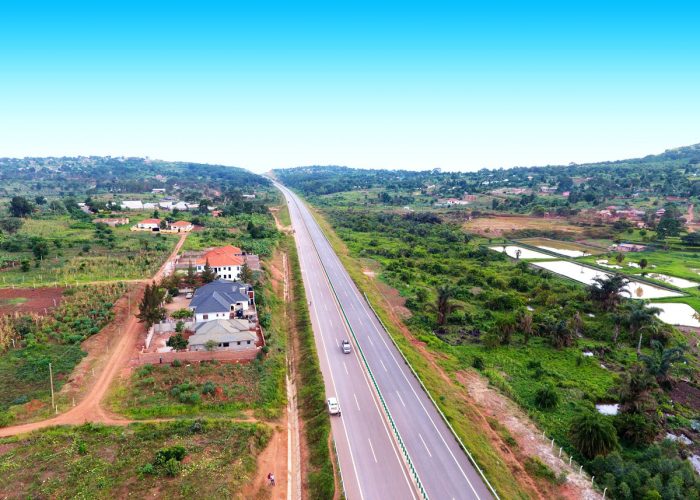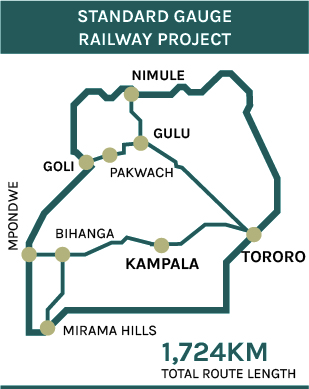As published in print with 

Uganda’s leaders understand that the country cannot unlock the potential of its human and material resources without providing genuinely high-quality infrastructure. To this end, the land-locked nation is currently engaged in a major overhaul of its air, rail, water and road transport sectors
Spending on infrastructure was the largest single item in the Ugandan government’s budget for 2017-18, signalling its determination to open up the whole country to greater economic opportunities. Close to £1 billion was set aside for continued public works to boost Uganda’s air-transport capacity and make surface movement faster and easier within its own borders and to speed goods towards ports on Africa’s east coast.
Entebbe International Airport is being prepared to increase the number of passengers it handles each year from the current 1.6 million to a potential 3.5 million by 2021. By the same token, cargo volumes are expected double to 100,000 tonnes per year over the same period. Hand in hand with greater volume at Uganda’s prime airport, the Kampala-Entebbe Expressway is close to completion, meaning time spent travelling from the runway to the country’s capital will be cut by two-thirds.

The Kampala-Entebbe Expressway cuts journey times from Uganda’s main international airport to the capital to just 30 minutes. Photo: UNRA
Boosting Uganda’s outer regions is also a key objective of the public works programme. Now under construction, Kabaale Airport will become the country’s second international airport, allowing business travellers to fly directly to the developing oil region and providing new opportunities for the tourism industry in western and northern Uganda.
The New Jinja Bridge over the Nile will improve transport towards the east as part of an expanded road network fanning out across Uganda. The long-awaited Standard Gauge Railway project will also promote integration and trade by providing what are presently missing links with neighboring countries, notably Kenya and its important port at Mombasa. Finally, Uganda’s government is also seeking to use the country’s many lakes and waterways more effectively through water transportation investment projects.
The Kampala-Entebbe Expressway. Photo: UNRA
For business, lower transportation costs are fundamental to move into new markets and develop more sophisticated products, as opposed to simply exporting raw materials in bulk. “Infrastructure spending is excellent. To do it, Uganda needs to borrow money but this is a necessary evil. Invest now, put up with the pain, and have the benefits later on,” says Tony Gadhoke, CEO of the Mukwano Group of Companies, a conglomerate involved in manufacturing, food processing and agriculture, amongst other industries.
Uganda is driving forward a long-distance railway in a brave bid to boost East African economic integration
One of the biggest handicaps to developing economic activity in Uganda and the region at large is the lack of efficient transport, leading to relatively high business costs. Big problems require ambitious solutions, and the planned 1,724-kilometre Standard Gauge Railway (SGR) network criss-crossing Uganda and reaching several neighbouring countries is just that.
Uganda is currently at the advanced preparation stage to start work on constructing the grid’s first 273 kilometres, from Kampala to Malaba, on the border with Kenya at a cost of $2.3 billion. That route will eventually reach the key regional port of Mombasa on the Kenyan coast. Using the limited passenger and freight facilities of the existing Metre Gauge Railway (MGR) to reach Mombasa from Kampala can take between one and two weeks, with road transport to the port averaging between four to seven days.
“It is important that Uganda’s investment climate is competitive globally. Investors want to be assured of reliable, cheap and adequate transport services to the markets. This is the basis of developing a modern railway,” explains Kasingye Kyamugambi, SGR project coordinator.
SGR will bring a series of major investment opportunities over coming years, including construction of the Western Route (662km), industrial and business parks along the Eastern Route, and the construction and operation of inland container depots and silos. In addition, the government of Uganda is planning to develop a 240-kilometre light rail transit system in the Greater Kampala Metropolitan Area.
